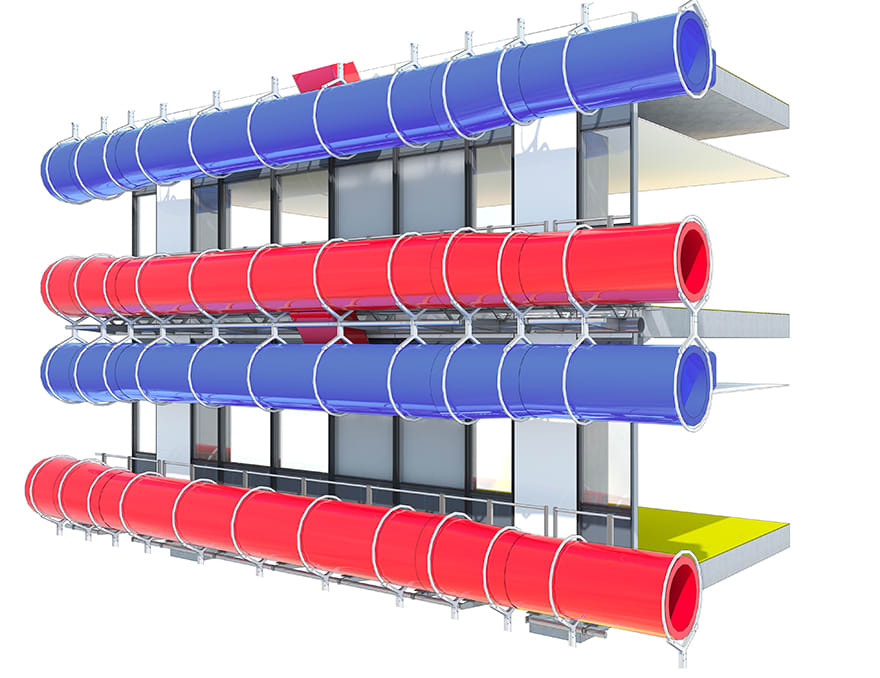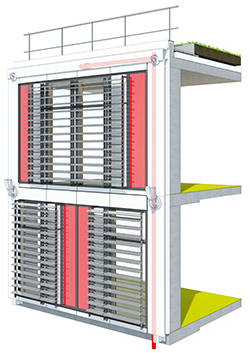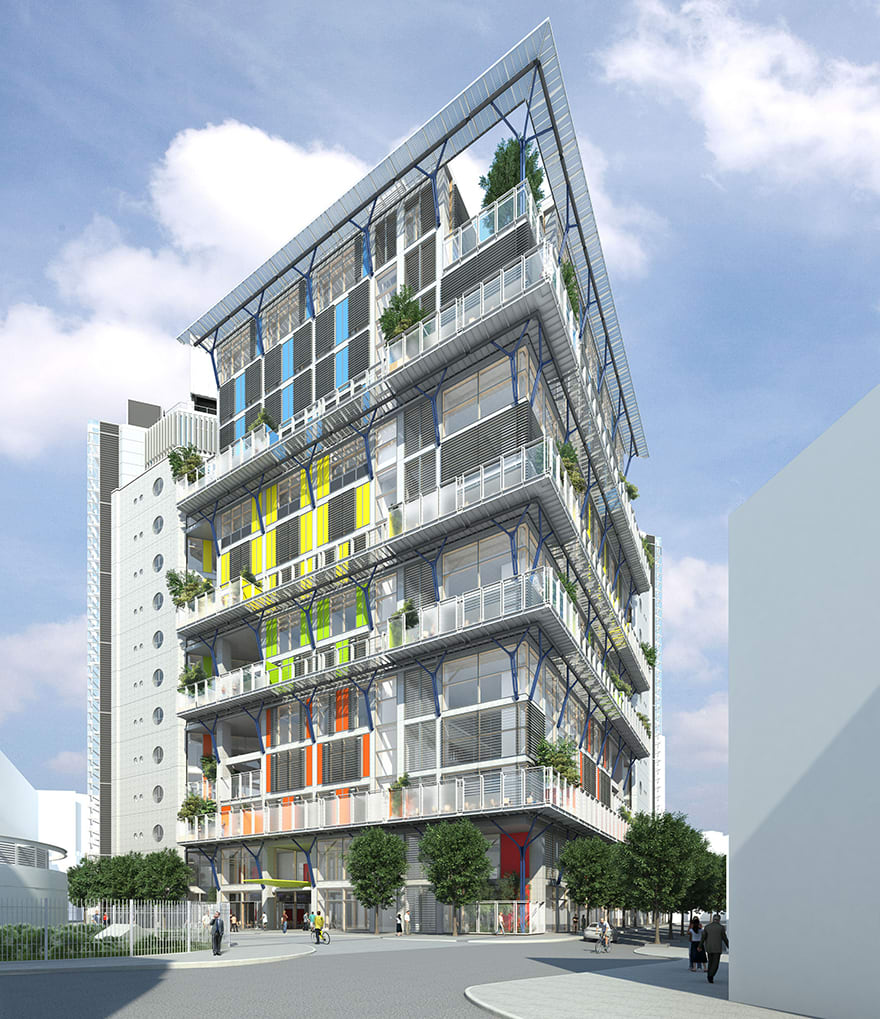- Client: NHS
- Lead Contractor: Laing O’Rourke
- BIM Tools: Bentley AECOsim Building Designer
Rogers Stirk Harbour + Partners (RSHP) and Laing O’Rourke’s 14-storey cancer care centre at Guy’s Hospital, which topped out earlier this week, has been the catalyst for the architect adopting BIM across the practice.
Although the firm had been designing with BIM authoring tools before winning this project (the Leadenhall Building, commonly known as the Cheesegrater benefited from BIM tools and processes to various extents), Guy’s was RSHP’s first project produced at a BIM Level 2.
The 20,000m² building, at the hospital’s London Bridge site, is made up of a number of “villages”, each relating to a particular patient need – chemotherapy, radiotherapy or the one-stop clinic – stacked above a double-height welcome area at the base of the building.
As the £160m project is NHS funded it was written into the construction contract that the hospital would be delivered in BIM Level 2, with much of the contract shaped from PAS1192 guidelines.
Willem Kok, head of IT & BIM at RSHP, explains that the project has changed the way the practice works for the better. “We took the project on in 2011 and it’s been a cultural shift for the practice,” he says. “Overall, all aspects of our design and documentation have benefited from BIM,” he continues, which is why BIM is now being embraced at the practice.


All parts of the hospital were designed in 3D
Design-wise the project BIM model allowed RSHP to explore the building in greater detail as all parts of the hospital were designed in 3D, whereas traditionally the architects would often hone in on details through 2D drawings.
Using lean modelling techniques in Bentley AECOsim Building Designer, the architect developed the BIM at a level of detail to facilitate 1:10-1:20 scale drawings. The model was taken out to tender by the main contractor, Laing O’Rourke, and passed to its in-house fabrication facility in Worksop and other fabricators.
For RSHP a key factor to consider was how much embedded information to incorporate into the model and key to this was the question: “Who will use the model and for what purpose?”
To avoid unnecessary work RSHP did not want to model elements or add information that would not be used, as although Laing O’Rourke utilises BIM, there is no guarantee that all other parties in the supply chain will.
Many of the subcontractors and trades still required 2D drawings to tender, however, this is something that RSHP would like to see change. “As a practice we would like to be in a place where we avoid producing 2D drawings for tender and coordination purposes as much as possible,” says Kok. “When you collaborate with parties who can’t use BIM it is frustrating as they cannot coordinate using the same project information model as everyone else and this affects the overall programme,” he continues.

Guy’s was the foundation for Level 2 BIM adoption in RSHP
Evaluating the project as it is drawing to a close, Kok is extremely keen to establish which parties engaged in BIM to gain an understanding of how BIM data was actually used so that the company can better tailor its future designs and processes.
Not only was the project a cultural shift for the practice, a technical shift was also required as initially the architectural team needed to be trained to work at BIM Level 2. Of course, this came at a cost, but one that Kok believes will provide long-term benefits to the practice. “We have probably broken even compared to a traditional design method, due to the investment needed to train a team who were new to BIM at the time. However, these people are now an asset and our BIM processes well established, so in the long term it saves the practice money.”
“Guy’s was the foundation for Level 2 BIM adoption in the practice. It has allowed me to demonstrate the need for expanding our specialist BIM team and BIM training programme and we are now working on several other BIM Level 2 projects,” Kok concludes.
RSHP believes that this project has demonstrated that BIM can leverage imagination by capturing its architects’ design intent effectively while meeting its clients’ expectations through better coordination and documentation to deliver high performance buildings.
The Cancer Care Centre opens to patients in 2016.
When you collaborate with parties who can’t use BIM it is frustrating as they cannot coordinate using the same project information model as everyone else and this affects the overall programme.– Willem Kok, head of IT & BIM, RSHP
Comments
Comments are closed.












There is no way that this project was Level 2 compliant.